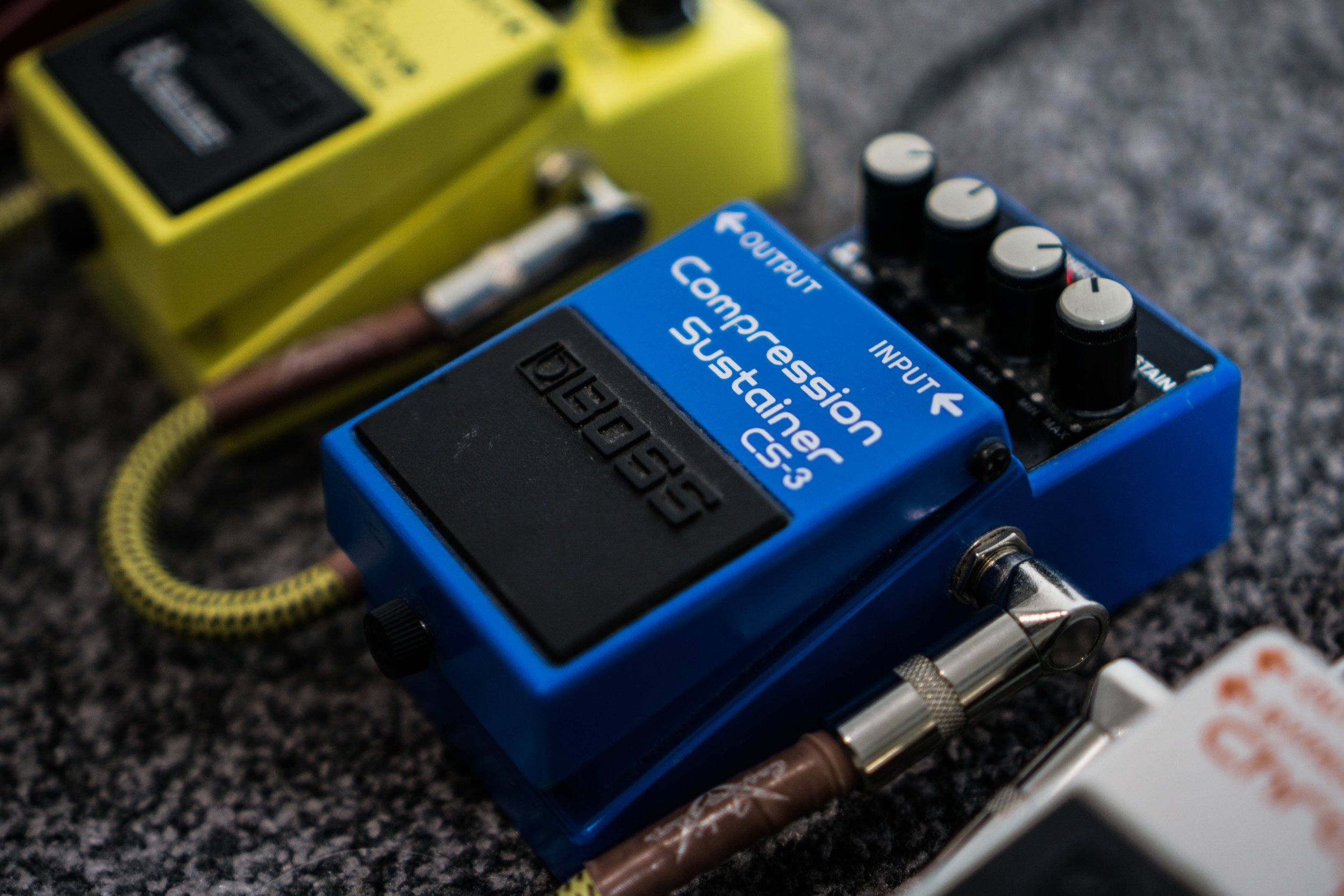Boss CS-3
The most utilitarian compressor.
£88 at amazon.co.uk | £95 at guitarguitar.co.uk
Boss launched their first compressor pedal, the CS-1, in 1978. In 82’ they added an attack knob and dropped the tone toggle, releasing the CS-2. Another four years later, they made some more tweaks to the circuit and added a ‘Tone’ control. The CS-3 has remained unchanged since 1986 and is still one of the best-selling compressor pedals in the world.
What does it do? A compressor pedal lowers the output when there is a spike in volume and boosts the volume of a fading signal, improving sustain. This evens out your playing dynamics and produces a smoother tone.
The sustain control is the most important. It determines how much and how long fading frequencies will be boosted in volume. At the lowest setting, you get no compression at all in addition to a significant reduction to the overall volume. You can use the volume knob to fix that, but I would argue that the 0-25% range of the sustain knob is rather useless. Around 25-50% is the sweet spot. It just makes your playing sound better. Single notes sustain for longer and you can distinctly hear every note of a full chord. Depending on your pickups, your signal will start getting noisy though. I’ve found that even at 30% sustain, the CS-3 starts to significantly amplify the hum of single coil pickups. Humbuckers are fairly quiet until you turn the knob past 50%. Active pickups will fare even better.
If you want the CS-3 as a subtle always-on effect, it is best not to go past 12 o’clock on the sustain. This is not unique to the Boss CS-3 though! Both the Keeley Compressor and the Xotic SP Comp get quite noisy with single coil pickups. This is expected, since amplifying quiet signals is the whole point of a compressor pedal. While I am not a fan of the sound with the sustain past 50%, it is still nice to have the additional range.
The attack control is often absent from other compressor pedals. It determines the time it takes for the compression to start being applied to a loud signal. Max out the attack and louder notes will be tamed almost instantly. On the lowest setting, it will only kick in if the louder notes persist for long enough. You probably won’t want to steer too far away from the middle position here. If the attack is too high, you will get a lot of popping sounds. It kind of sounds like the pedal is broken, even though it is working exactly as intended - letting through a tiny fraction of the note, then cutting the volume abruptly every time. Setting it too low can also have some strange effects, like a note being attenuated down, then suddenly swelling in volume before fading out again.
Unlike many other compressor pedals, the CS-3 doesn’t alter the tone of the guitar very much. If you like your sound without the CS-3, you can just leave the tone control flat. It is still a very welcome addition, in case you want to use the compressor as an effect for solos or specific parts of a song, rather than keeping it always on.
The level control is absolutely essential and works exactly as you would expect. Any compressor can alter your output and you need to be able to bring it back up or down.
It can be tricky to dial in the perfect tone, but don’t let that discourage you. Start with all the controls at 12 o’clock. Then dial in each control, starting with sustain and attack, then tone. Finally, set the level where you want it. Easy! The wide range of each control ensures that you will get a sound that’s right for your pickups and playing style. It’s not a surprise that Boss have not felt the need to improve on this formula in over 40 years. In addition to the versatility and refreshingly utilitarian design of the CS-3, you also get incredible build quality and reliability, backed by the standard Boss 5 year warranty.
There are a few alternatives available at this price point. The JHS 3 Series Compressor, while not as versatile, will be easier to dial in. The MXR Dyna Comp has a very distinct sound, but is also a very popular option. The Electro Harmonix Corset skips the tone control, but adds a blend knob that lets you mix in your uncompressed signal.
Bottom Line
The Boss CS-3 is a very powerful and versatile tool. The sound quality is much higher than anything you would find at this price point. The level of control you get over the effect is unmatched. You will be able to dial in a great sound with any amp or guitar pickups. This does mean that many of the knob positions will not be suitable for your particular setup, so you will have to spend some time finding the settings that work best for you.



